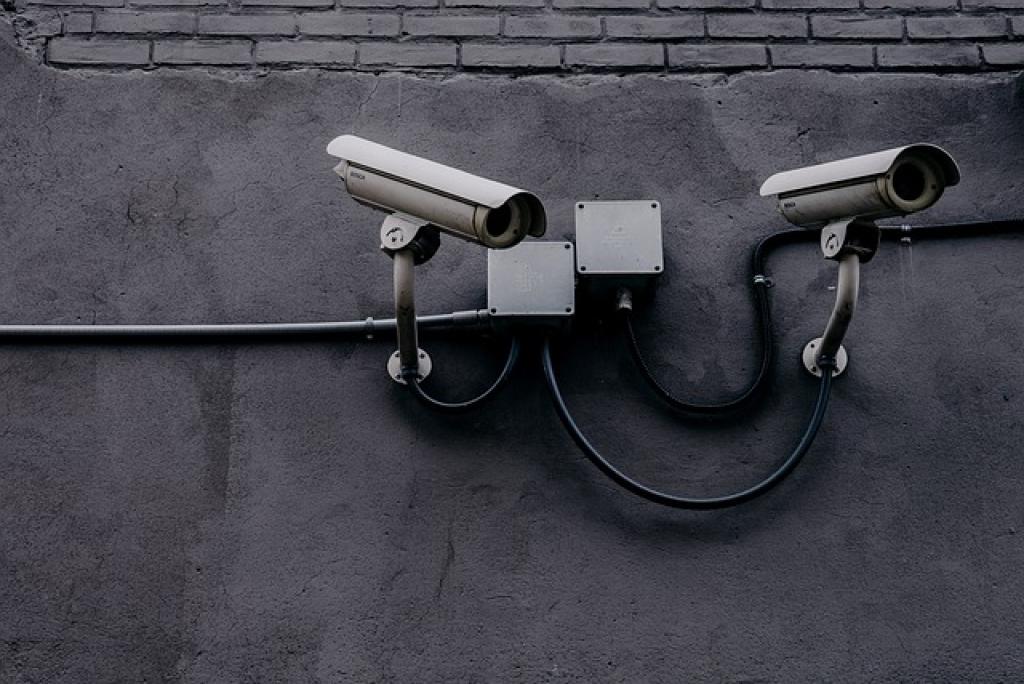
What Type of Security Does Your Business Really Need?
In a world where data breaches and cyber threats are as common as morning coffee, securing your business is no longer just an option—it’s a necessity. Yet, with so many choices available, from digital firewalls to physical surveillance systems, pinpointing the right security measures can feel overwhelming.
Are you a cozy local bakery or a sprawling multinational corporation? Understanding your business’s unique needs is crucial. This isn’t a one-size-fits-all scenario; security requirements can vary drastically based on your business size, type, and even location.
Whether you’re concerned about protecting sensitive customer information or safeguarding your physical premises, identifying the right security mix is the first step. Investing wisely not only protects your assets but also builds trust with your customers and strengthens your brand’s reputation.
Let’s explore the essential security solutions tailored to ensure that your business is well-guarded against potential threats.
Assessing Your Business’s Vulnerabilities
Before investing in security solutions, it’s vital to understand where your business is most at risk. Start by conducting a thorough risk assessment. This process involves identifying potential threats, whether they’re cyber-based or physical, and determining how likely they are to occur.
Know Your Weak Points
Inventory your assets, including data, equipment, and any proprietary information. Consider how a security breach could impact these areas. Small businesses, for example, might overlook cybersecurity, thinking they’re too small to be targeted—but cybercriminals often target precisely these overlooked companies.
Reflect on the physical space your business occupies. Are there areas of easy access that need reinforcement? Is your data stored securely on both digital and physical platforms? Documenting these points of vulnerability can provide a clear roadmap for where security measures are needed most.
Involving your team in this assessment can be eye-opening. Employees are often aware of day-to-day processes that may pose risks and can provide insights into overlooked areas. Engaging them in this process not only helps in assessing vulnerabilities but also creates a security-conscious culture within your business.
Understanding Different Types of Security Threats
To effectively protect your business, familiarizing yourself with the various types of security threats is essential. These threats can be categorized largely into cyber and physical threats, each requiring its distinct approach to mitigation.
Cyber Threats
Cyber threats encompass a wide array of potential risks, from phishing scams to ransomware attacks. Phishing remains a prevalent method for cybercriminals, tricking employees into revealing sensitive information. Meanwhile, ransomware can cripple your business by encrypting data and demanding payment for its release.
Staying informed about these digital dangers is crucial, and implementing solutions like regular software updates, robust firewalls, and reliable backup systems can make a significant difference in keeping cyber threats at bay.
Physical Threats
Physical security threats can stem from burglary, vandalism, or even natural disasters. Simple measures such as installing security cameras, motion detectors, and adequate lighting can deter unauthorized access and protect your premises.
Don’t overlook the importance of securing any sensitive physical documents in locked areas. Regularly reviewing and upgrading these security measures ensures your defenses are strong against evolving threats.
By understanding and preparing for both cyber and physical threats, you can create a comprehensive security strategy that fortifies your business on all fronts.
Choosing the Right Access Control Systems
Selecting the appropriate access control systems is a critical part of your business’s security strategy. These systems regulate who can enter your premises or access certain data, ensuring only authorized individuals are granted permission.
Begin by considering the specific needs of your business. Are you protecting a small office with regular business hours, or a larger facility that operates 24/7? The scale and nature of your operations will inform the type of access control system you need, such as simple key card systems or more advanced biometric scanners.
Identify areas that require heightened security, like server rooms or confidential archives, and consider implementing multi-factor authentication for added protection. This could involve a combination of fingerprint scans, security codes, or access cards to ensure a robust layer of defense.
Regularly updating and maintaining access control systems is essential to their effectiveness. Conduct routine audits to ensure the systems function optimally and employee access permissions remain up-to-date. By tailoring access control systems to your specific business environment, you enhance security, streamline operations, and protect valuable assets.
Implementing Physical Security Measures
Physical security measures are your first line of defense against unauthorized access and potential threats. They help safeguard your premises, ensuring that both assets and personnel are protected.
Start by evaluating the entry points of your business. Simple actions like installing sturdy locks and deadbolts can prevent break-ins. Consider using reinforced doors for sensitive areas that require extra attention.
Security cameras serve as both a deterrent and a tool for monitoring activities within and around your premises. Opt for a system that covers all critical zones, and ensure the footage is accessible for review in case of incidents.
Lighting plays an essential role in physical security, deterring potential intruders with well-lit exteriors and parking areas. Motion-activated lights provide an additional layer of security by startling would-be intruders.
Don’t forget about the importance of physical barriers. Fences, bollards, and landscaping can define boundaries and limit access, while clear signage can guide visitors and deter those with malicious intent.
Regular maintenance of these physical security elements ensures they function effectively and remain a strong deterrent against threats. By implementing these measures, you build a solid foundation for your business’s overall security posture.
Protecting Your Data with Encryption
Data encryption is an essential tool in your cybersecurity arsenal, transforming sensitive information into unreadable code for anyone without the proper decryption key. This protects your data from unauthorized access and breaches.
Encryption can be applied across various levels of your business operations. Start by encrypting sensitive data at rest, such as customer records and financial details. This means that even if a breach occurs, the information remains inaccessible to intruders.
Encrypting Communications
In today’s digital age, encrypting communications is vital. This includes emails and internal messages that may contain confidential information. Utilize end-to-end encryption protocols to ensure that only the intended recipient can read the message content.
Encryption is not just for large enterprises; small businesses can benefit greatly by securing client data and maintaining compliance with data protection regulations. Implementing encryption can boost customer confidence and reinforce your commitment to privacy and security.
Regularly review and update your encryption methods, as technology and threats continue to evolve. By incorporating strong encryption practices, you safeguard your digital assets and protect your business from the costly repercussions of data breaches.
Securing Your Network and Devices
In an increasingly connected world, securing your network and devices is paramount to protecting your business from cyber threats. This ensures that your digital resources remain safe from unauthorized access and potential attacks.
Start by implementing a robust firewall to serve as a barrier between your internal network and potential online threats. Regular updates and patches are crucial for your firewall to function effectively and fend off new vulnerabilities.
Device Management
Each device connected to your network represents a potential entry point for cybercriminals. Implement comprehensive device management protocols to ensure that all computers, tablets, and smartphones adhere to your security policies. This includes installing antivirus software and enabling automatic updates.
Secure your Wi-Fi networks with strong, unique passwords and consider using a virtual private network (VPN) for remote connections. This way, sensitive data remains encrypted and less vulnerable to interception.
Regular network audits help identify weaknesses in your current setup, allowing for timely improvements. Encourage staff to report suspicious activity promptly, fostering a proactive security culture. By securing your network and devices diligently, you significantly reduce the risk of cyber intrusions and safeguard your business’s digital infrastructure.
Creating a Comprehensive Security Plan
Developing a comprehensive security plan is a strategic step in ensuring that all aspects of your business are protected. This plan should be tailored to your business’s unique needs, addressing both physical and digital vulnerabilities.
Start by outlining clear security goals and objectives. What are the primary threats your business faces? Defining these will help you prioritize actions and allocate resources effectively.
Engage your team in the planning process. Diverse perspectives can illuminate potential risks and foster a collective commitment to security practices. Training employees on security protocols and response drills ensures everyone is prepared in case of incidents.
Document your strategies and protocols in an accessible format, and include guidelines for regular audits and updates. Security threats evolve, and a dynamic plan should adapt accordingly to keep pace with emerging risks.
Test your security measures regularly to identify any weaknesses and make improvements. These tests can include simulated breaches or unexpected audits to ensure readiness. By creating and maintaining a comprehensive security plan, you fortify your business against unforeseen threats and secure a safer environment for your operations.
The Bottom Line: Investing in Proper Security Measures
Ensuring the safety of your business is more than just a precaution—it’s a vital investment for your future. As we’ve explored, a range of security measures, from physical protections to digital safeguards, serve as the backbone of a secure business environment.
Each business is unique, demanding tailored solutions rather than a generic approach. Thoughtfully assessing your vulnerabilities, understanding potential threats, and implementing customized controls can be the difference between a secure operation and one susceptible to risks.
Moreover, investing in security isn’t merely about prevention; it’s about peace of mind. With a robust security plan in place—backed by technology and a vigilant team—you can focus on what truly matters: growing your business and serving your customers.
Transitioning to a security-conscious culture also elevates your brand reputation, fostering trust with clients who are increasingly aware of data privacy and security practices. Not only does this bolster customer loyalty, but it can also set you apart in a competitive market.
Ultimately, the cost of implementing comprehensive security solutions pales in comparison to the potential losses from breaches and thefts. By being proactive and investing in proper measures, you’re not just protecting assets—you’re empowering your business to thrive securely now and in the future. Embrace this investment as a foundational step towards a resilient, trusted business.


